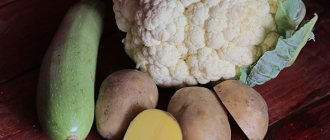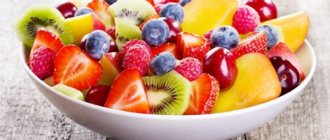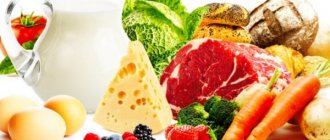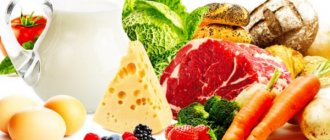Meat
All types of meat contain almost no carbohydrates. The only exception is parts such as the liver, which contains about 5% carbohydrates.
Beef (zero)
Beef is filling and rich in important elements such as iron and B12. There are dozens of ways to prepare it, from ribs to ground meat and cutlets.
Carbohydrates : zero
Lamb (zero)
Like beef, lamb contains a lot of nutrients, iron and B12. Because the animal is often grass-fed, the meat often contains an essential fatty acid called conjugated linoleic acid, or CLA (14).
Carbohydrates : zero
Chicken (zero)
Chicken is one of the most popular foods on earth. It contains many useful substances and is an excellent source of protein.
If you're on a low-carb diet, you may want to opt for fattier cuts like wings or thighs.
Carbohydrates : zero
Pork, including bacon (usually zero)
Pork is another delicious type of meat, and bacon is a favorite of many low-carb dieters.
Bacon, however, is a processed meat, so it hardly qualifies as a “health food.” However, on a low-carb diet it is quite acceptable to eat a moderate amount.
Most importantly, try to buy bacon from retailers you trust, make sure it doesn't contain artificial additives, and don't overcook the meat when cooking.
Carbohydrates : zero. But read the label carefully and avoid smoked or sugar-cured bacon.
Jerky (usually zero)
Dried meat is meat that has been cut into thin pieces and dried. And, as long as there is no added sugar or artificial additives, it can be a great addition to a low-carb diet.
However, we should not forget that what is sold in stores is often highly processed and is no longer healthy food. Therefore, it is best to make such meat yourself.
Carbohydrates : depends on the type. If it's just meat with seasoning, then approximately zero.
What is the essence of the weight loss method?
Carbohydrates provide the body with the necessary amount of energy, which is spent during the day on vital processes and during physical activity. A complete refusal of a macronutrient will lead to malfunctions in the functioning of functional systems, and a surplus of energy received will lead to an increase in fat reserves. A low-carbohydrate diet includes slow (complex) carbohydrates, which do not cause a strong spike in blood sugar and take longer to convert into energy.
The essence of the method is that from the first day of the diet for safe and effective weight loss, every day the amount of carbohydrates consumed is reduced, and proteins increase. Thanks to this, the following processes are launched in the body:
- Previously received energy is in short supply, which forces us to look for a new source.
- In the first 2-3 days of the diet, glycogen becomes the main supplier of energy.
- Next, fats are broken down, synthesizing an additional source of energy - ketone.
Studies comparing the benefits of low-carb and low-fat diets for weight loss found that people who minimized carbohydrates lost more weight over 6 months than those who followed a low-fat diet.
With a low-carbohydrate diet, subjects felt fuller after eating because proteins and fats break down more slowly than carbohydrates. In addition, the increase in blood sugar levels and insulin production occurred gradually. This means that they did not have sudden bursts of energy, which are replaced by fatigue and an increased feeling of hunger.
Conclusion : the principle of the diet is biochemical processes that promote fat burning and loss of extra pounds.
It is important to remember that during a diet, the fat layer is uniformly reduced throughout the body, so it is impossible to reduce volumes locally.
Advantages and disadvantages
The low carbohydrate content in the menu has a beneficial effect on the body's condition, normalizing digestion, increasing metabolic processes and rejuvenating.
Pros:
- on a diet there is no hunger, strength remains at the same level, there is no weakness;
- suitable for diabetics;
- suitable nutrition for men and women for the purpose of losing weight;
- Suitable for low, medium and high activity levels;
- does not require a significant change in the calculation of daily calorie needs when losing weight, the indicators of proteins and carbohydrates change.
Reducing the amount of macronutrients helps to lose weight and improve health, recommended for:
- overweight;
- intense training;
- diabetes mellitus;
- hypertension;
- endocrine system disorders;
- oncological diseases.
The method has gained confidence among athletes and competitive bodybuilders - it is a reliable opportunity to gain relief by reducing the percentage of subcutaneous fat and maintaining muscle mass.
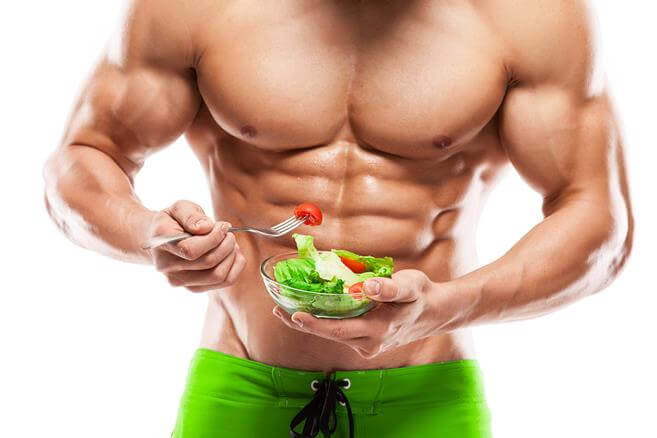
However, the diet has disadvantages:
- constipation - a decrease in fiber, which is associated with a reduction in carbohydrate intake, can lead to digestive problems;
- carbohydrate starvation can cause headaches, irritability and nervousness;
- exacerbation of chronic diseases;
- increases the load on the liver;
- potassium and sodium are in short supply;
- carbohydrate deficiency reduces concentration, which is critical for people engaged in mental work;
- an increase in cholesterol levels due to a large amount of animal products, which provokes the development of diseases of the cardiovascular system;
A low-carb diet is not on the list of methods that can be followed for several years, since a large list of prohibited foods creates additional stress for the body. Therefore, after several weeks or months of restrictions, a person returns to his usual diet.
Balance of proteins, fats, carbohydrates
The main source of protein on a low-carb diet is animal products: meat, poultry, offal, cottage cheese, eggs. For vegetarians, legumes and nuts are an alternative.
The ratio of BJU in the diet is within:
- Proteins 40-50%;
- Fats 30-35%;
- Carbohydrates 20-25%.
Fish and seafood
Fish and other seafood are generally very nutritious and healthy.
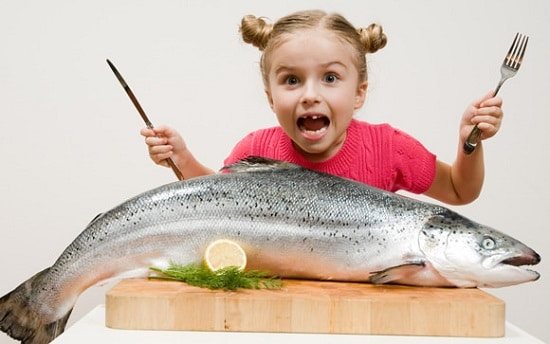
They are especially high in vitamin B12, iodine and omega-3 unsaturated fatty acids, which are elements that many people lack in their diets.
Like meat, almost all fish and seafood contain almost no carbohydrates.
Salmon (zero)
Salmon is one of the most popular fish among health-conscious people, and for good reason.
It is an oily fish, which means it contains significant reserves of heart-healthy fats, in this case, omega-3 unsaturated fatty acids.
Salmon is also rich in vitamin B12, D3 and iodine.
Carbohydrates : zero.
Trout (zero)
Carbohydrates : zero.
Like salmon, trout is a type of fatty fish rich in omega-3 unsaturated fatty acids and other important elements.
Sardine (zero)
Sardine is a fatty fish that is usually eaten almost entirely, bones and all.
Sardine is one of the most nutrient-dense fish on the planet, and contains almost everything the human body needs.
Carbohydrates: zero.
Shellfish (4-5% carbohydrates)
Unfortunately, shellfish find their way into our daily diet much less often than they deserve. However, they are on a par with the healthiest products in the world, and in terms of nutritional richness they can compete with meat from internal organs.
Shellfish typically contain small amounts of carbohydrates.
Carbohydrates : 4-5 grams of carbohydrates per 100 grams of shellfish.
Authorized Products
The basis of the diet consists of lean red meats, river and sea fish (herring, tuna, salmon) in any culinary preparation, rabbit and poultry meat (chicken, turkey), seafood, chicken eggs, vegetable oils (olive, corn, sunflower), porridge (buckwheat, wheat, oatmeal and rice).
The diet should include hard cheese, sour cream, cottage cheese and other high-fat dairy products, butter and green vegetables rich in fiber: carrots, cabbage, zucchini, onions, tomatoes, eggplant, melons, celery stalks, zucchini, green salad leaves, cucumbers, green beans.
You can also include walnuts, flax seeds, peanuts, and olives in your diet. Good sources of complex carbohydrates include boiled or baked potatoes, bran, legumes (beans, lentils, peas, chickpeas), whole grain baked goods and bread.
Table of permitted products
| Proteins, g | Fats, g | Carbohydrates, g | Calories, kcal | |
Vegetables and greens | ||||
| eggplant | 1,2 | 0,1 | 4,5 | 24 |
| peas | 6,0 | 0,0 | 9,0 | 60 |
| green peas | 5,0 | 0,2 | 13,8 | 73 |
| zucchini | 0,6 | 0,3 | 4,6 | 24 |
| cabbage | 1,8 | 0,1 | 4,7 | 27 |
| broccoli | 3,0 | 0,4 | 5,2 | 28 |
| carrot | 1,3 | 0,1 | 6,9 | 32 |
| cucumbers | 0,8 | 0,1 | 2,8 | 15 |
| olives | 0,8 | 10,7 | 6,3 | 115 |
| iceberg lettuce | 0,9 | 0,1 | 1,8 | 14 |
| tomatoes | 0,6 | 0,2 | 4,2 | 20 |
| beans | 7,8 | 0,5 | 21,5 | 123 |
| green beans | 2,8 | 0,4 | 8,4 | 47 |
| lentils | 24,0 | 1,5 | 42,7 | 284 |
Nuts and dried fruits | ||||
| nuts | 15,0 | 40,0 | 20,0 | 500 |
| flax seeds | 18,3 | 42,2 | 28,9 | 534 |
Cereals and porridges | ||||
| buckwheat | 4,5 | 2,3 | 25,0 | 132 |
| oatmeal | 3,2 | 4,1 | 14,2 | 102 |
| millet porridge | 4,7 | 1,1 | 26,1 | 135 |
| brown rice | 7,4 | 1,8 | 72,9 | 337 |
Bakery products | ||||
| whole grain bread | 10,1 | 2,3 | 57,1 | 295 |
Dairy | ||||
| Ryazhenka | 2,8 | 4,0 | 4,2 | 67 |
Cheeses and cottage cheese | ||||
| cottage cheese | 17,2 | 5,0 | 1,8 | 121 |
Meat products | ||||
| boiled beef | 25,8 | 16,8 | 0,0 | 254 |
| veal | 19,7 | 1,2 | 0,0 | 90 |
| rabbit | 21,0 | 8,0 | 0,0 | 156 |
| bacon | 23,0 | 45,0 | 0,0 | 500 |
Sausages | ||||
| sausages | 10,1 | 31,6 | 1,9 | 332 |
| sausages | 12,3 | 25,3 | 0,0 | 277 |
Bird | ||||
| boiled chicken breast | 29,8 | 1,8 | 0,5 | 137 |
| turkey | 19,2 | 0,7 | 0,0 | 84 |
Eggs | ||||
| soft-boiled chicken eggs | 12,8 | 11,6 | 0,8 | 159 |
Fish and seafood | ||||
| seafood | 15,5 | 1,0 | 0,1 | 85 |
| canned fish | 17,5 | 2,0 | 0,0 | 88 |
| herring | 16,3 | 10,7 | — | 161 |
| cod (liver in oil) | 4,2 | 65,7 | 1,2 | 613 |
| tuna | 23,0 | 1,0 | — | 101 |
Oils and fats | ||||
| vegetable oil | 0,0 | 99,0 | 0,0 | 899 |
| butter | 0,5 | 82,5 | 0,8 | 748 |
| linseed oil | 0,0 | 99,8 | 0,0 | 898 |
Non-alcoholic drinks | ||||
| mineral water | 0,0 | 0,0 | 0,0 | — |
| green tea | 0,0 | 0,0 | 0,0 | — |
| * data is per 100 g of product | ||||
Vegetables
Most vegetables contain almost no carbohydrates, especially leafy greens and cruciferous vegetables, since almost all of their carbohydrates are found in fiber.

On the other hand, starchy root vegetables such as potatoes and sweet potatoes are rich in carbohydrates.
Broccoli (7%)
Broccoli is a delicious cruciferous vegetable that can be cooked or eaten raw. It's high in vitamin C, vitamin K, fiber, and contains powerful plant compounds that may help prevent cancer.
Carbohydrates : 6 grams per cup or 7 grams per 100 grams.
Tomatoes (4%)
Technically, tomatoes are berries, but they are classified as vegetables. They have a lot of vitamin C and potassium.
Carbohydrates: 7 grams in a large tomato or 4 grams per 100 grams.
Onion (9%)
Onions are one of the tastiest vegetables on earth and add a vibrant flavor to dishes. It contains a lot of fiber, antioxidants and various anti-inflammatory components.
Carbohydrates: 11 grams per cup or 9 grams per 100 grams.
Brussels sprouts (7%)
Brussels sprouts are an incredibly nutritious vegetable, a relative of broccoli and regular cabbage. Rich in vitamin C, K and many other beneficial elements.
Carbohydrates: 6 grams per half cup or 7 grams per 100 grams.
Cauliflower (5%)
Cauliflower is a tasty and versatile vegetable that can be used to prepare varied and interesting dishes. It is rich in vitamins C, K and folate.
Carbohydrates : 5 grams per cup and 5 grams per 100 grams.
Kale (10%)
Kale or kale is very popular among health-conscious people. It is rich in fiber, vitamins C, K and carotene antioxidants. Among other things, kale in general has incredible health benefits.
Carbohydrates: 7 grams per cup or 10 grams per 100 grams.
Eggplant (6%)
Eggplant is another fruit that is often mistaken for a vegetable. It is rich in fiber and very varied in consumption.
Carbohydrates: 5 grams per cup or 6 grams per 100 grams.
Cucumber (4%)
Cucumber is a common vegetable with a mild flavor. Consists mainly of water with a small amount of vitamin K. [goes well with lard - approx. transl.]
Carbohydrates: 2 grams per half cup or 4 grams per 100 grams.
Bell pepper (6%)
Bell pepper is a well-known vegetable with a distinct, pleasant taste. It is high in fiber, vitamin C and carotene antioxidants.
Carbohydrates : 9 grams per cup or 6 grams per 100 grams.
Asparagus (2%)
Asparagus is a surprisingly tasty spring vegetable. It's loaded with fiber, vitamin C, folate, vitamin K, and carotene antioxidants. It also has a lot of protein compared to other vegetables.
Carbohydrates: 3 grams per cup or 2 grams per 100 grams.
Green beans (7%)
Green beans are technically a member of the legume family, but they are cooked and consumed as a vegetable.
Each bite contains a huge amount of nutrients, as well as fiber, protein, vitamin C, K, magnesium and potassium.
Carbohydrates: 8 grams per cup or 7 grams per 100 grams.
Mushrooms (3%)
Mushrooms, generally speaking, are not plants, but for simplicity, edible mushrooms are classified as vegetables. They contain significant amounts of potassium and some B vitamins.
Carbohydrates : 3 grams per cup and 3 grams per 100 grams (ceps).
Prohibited Products

- chips and crackers
- pastas, breads and cereals
- sugar (you will have to drink unsweetened tea and coffee)
- plenty of fruits, vegetables and low-fat dairy products
- bananas and grapes (they contain a lot of fructose, a natural sugar)
- desserts such as cakes, pies and cookies
- cream (for coffee and ice cream)
- frozen meals
- fatty sauces, ketchup, mayonnaise
- juices, compotes and any other sweet drinks
- starchy vegetables (potatoes, sweet potatoes, etc.)
Fruits and berries
Although the generally accepted opinion about fruit is that it is a healthy food, the attitude towards it among supporters of a low-carb diet is quite contradictory.
And all because fruits sometimes contain quite a lot of carbohydrates compared to vegetables.

Depending on what threshold you have set for yourself, you may need to limit the amount of fruit to one or two per day.
This, however, does not apply to fatty fruits such as avocados or olives.
Low-sugar berries, such as strawberries, are also good for you.
Avocado (8.5%)
Avocado is a unique fruit. Instead of carbohydrates, it is loaded to the brim with healthy fats.
Avocados are high in fiber, potassium, and all sorts of other nutrients.
Carbohydrates: 13 grams per cup or 8.5 grams per 100 grams.
Don't forget that the carbohydrates mentioned (about 78%) are contained mainly in fiber, so there are practically no digestible (“net”) carbohydrates in it.
Olives (6%)
Olives are another delicious fruit that is high in fat. It contains a lot of iron, copper and vitamin E.
Carbohydrates: 2 grams per ounce or 6 grams per 100 grams.
Strawberry (8%)
Strawberries are the lowest carb, highest nutrient fruit you can find on your table. It is rich in vitamin C, manganese and various antioxidants.
Carbohydrates: 11 grams per cup or 8 grams per 100 grams.
Grapefruit (11%)
Grapefruits are citrus fruits related to oranges. They are very rich in vitamin C and carotene antioxidants.
Carbohydrates: 13 grams in half a grapefruit or 11 grams per 100 grams.
Apricot (11%)
Apricot is an incredibly delicious fruit. Each apricot contains some carbohydrates, but also a ton of vitamin C and potassium.
Carbohydrates: 8 grams in two apricots or 11 grams per 100 grams.
General rules
In recent years, fat-protein diets with extremely low carbohydrate content have become very popular.
Let's consider the question of what a low-carbohydrate diet is, its features and purpose. Dietary systems with carbohydrate restriction are used for various purposes: for weight loss, for diabetes mellitus , for the treatment of obesity , for hypertension . Low-carbohydrate diets (the so-called keto diets ) are also indicated for athletes involved in a sport such as billballing, which uses a special nutrition system - drying, which allows you to quickly gain relief and expressiveness of the body by reducing the fat layer and increasing lean muscle mass. And each of the intended purposes of diets with a reduced carbohydrate component has its own rules and many nuances.
Carbohydrates are a large class of chemical compounds, including simple (monosaccharides) and complex (polysaccharides) carbohydrates, each of which has different effects on metabolism:
- simple carbohydrates - are quickly absorbed in the body and are broken down into monosaccharides (glucose/fructose) during metabolism. They are quickly absorbed in the body and, if they are supplied in excess, and there is no need for them, they are converted into intra-abdominal and subcutaneous fat. When they are utilized, the blood sugar level quickly rises, which provides a feeling of satiety, which passes just as quickly. Products containing simple carbohydrates include sugar, sweet fruits, honey, jam, preserves, confectionery, candies and other sweets;
- complex carbohydrates (starch, glycogen , pectin , fiber, inulin ) are absorbed slowly in the body (the duration is 3-5 times longer). They have a complex structure and include many monosaccharides. They are broken down in the small intestine, and their absorption is slowed down by fiber. Complex carbohydrates increase blood sugar slowly, and therefore the body is saturated with energy evenly. Products containing complex carbohydrates (fiber, starch, pectin) include whole grain bread, white rice, cereals and cereals made from them, pasta, bananas, pineapple, dried fruits.
In essence, a low-carbohydrate diet models metabolic processes in the body that are identical to fasting, when metabolism is reoriented to gluconeogenesis , in which the process of glucose formation occurs from non-carbohydrate components (glycerol, lactic/pyruvic acid, amino acids , fatty acids). In the initial period of fasting, the metabolism of amino acids (protein) increases, which reaches a certain level and persists for 25-30 days, and then the use of protein as “metabolic fuel” slows down sharply, since its reserves in the body can only decrease to a certain level. At the same time, the mobilization and oxidation of free fatty acids accelerates.
At this stage, under conditions of severe carbohydrate deficiency, energy metabolism switches from carbohydrate to lipid metabolism, in which the energy substrate is the oxidation of fatty acids with the production and accumulation of ketone bodies. Thus, a low-carbohydrate, high-fat diet induces benign ketosis. And mobilization from the glycogen and the relatively rapid development of a feeling of satiety contributes to a faster rate of body weight loss.
When using diets of this type, it should be taken into account that the low content of carbohydrates and dietary fiber in the diet causes insufficient intake of vitamins and minerals into the body. Therefore, diets that suppress appetite against the background of rapid ketosis, even with the additional introduction of necessary components into the diet, can be prescribed for a limited period. When following low-carbohydrate diets, it is important to remember that the mechanism of formation of ketosis bodies is triggered by limiting carbohydrates in the diet to 100 g/day.
Hypocarbohydrate diet for weight loss
It is based on a sharp restriction in the diet of the amount of foods containing predominantly simple carbohydrates and, to a lesser extent, foods high in complex carbohydrates. At the same time, the protein content in the diet corresponds to the physiological norm, and the fat consumption rate is moderately reduced. Accordingly, the total calorie content of the daily diet is reduced to 1700-1800 Kcal/day. Limiting carbohydrates in weight loss diets below 120-130 g is not recommended or acceptable when using fasting diets for a short period. The choice of products - sources of carbohydrates is determined by the required degree of reduction in the energy value of the daily diet, the duration of the diet and the specified goal.
In the diet, sugar and sugar-containing products, confectionery products, sweet drinks, honey, ice cream are excluded, bakery and pasta products made from premium flour, polished rice, semolina are limited, and in cases where it is necessary to further reduce the energy value of the diet (up to 1000- 1200 kcal/day) excludes other cereals, potatoes, some fruits and berries (grapes, bananas,) dried fruits. The main source of carbohydrates should be products containing vitamins and minerals, rich in dietary fiber - dietary types of bread with the addition of bran and crushed grains, ground or wholemeal bread, legumes, cereals, preferably whole grains or partially retaining the shell (unpolished rice, buckwheat, barley/oatmeal porridge), vegetables, non-sweet fruits and berries.
It is important to understand that an anti-carbohydrate diet with the exclusion/limitation of sugar and sugar-containing foods in the diet does not mean that sugar contributes more to weight gain/ obesity than other carbohydrates. The presence of sugar in the diet is not important for reducing body weight in cases where the energy value of the diet is less than energy expenditure. The point of choosing carbohydrate sources is that products containing complex carbohydrates have a higher nutritional value (create conditions for the natural activity of intestinal microflora, stimulate the motor function of the gastrointestinal tract, adsorb toxic compounds, cholesterol ) and allow for more stable and long-lasting satiety than sugar-containing ones. products.
Low-carbohydrate diet - table of foods with quantitative carbohydrate content
To create a low-carbohydrate diet, it is important to understand the quantitative content of carbohydrates in certain foods. This information is reflected in the table below.
| Product name | Carbohydrate content |
| Bagels | 58 |
| Boiled pasta | 25 |
| Wheat porridge | 27 |
| White sugar | 105 |
| Armenian lavash | 56 |
| White bread | 51 |
| Bread Borodinsky | 39 |
| Green peas | 12 |
| Milk chocolate | 62 |
| Boiled white rice | 30 |
| Marmalade | 70 |
| Honey | 77 |
| Buckwheat | 29 |
| Dates | 68 |
| Peanut | 15 |
| Shortbread cookies | 58 |
| Hazelnut | 15 |
| Sunflower seeds | 18 |
| Sesame seeds | 20 |
| Walnuts | 11 |
| Watermelon | 9 |
| Eggplant | 5 |
| Cornflakes | 75 |
| Parsley | 8 |
| Tomatoes | 4 |
| Sour cream | 3 |
| Sweet pepper | 5 |
| Boiled potatoes | 16 |
| Boiled beets | 7 |
| Fruit kefir | 5 |
| Whole milk | 12 |
| Banana | 22 |
| Milk ice cream | 25 |
| Cashew | 25 |
| Carrot | 5 |
| Grape | 15 |
| Raspberries, strawberries | 5 |
| Tangerines, oranges | 7 |
| Apricot compote | 23 |
| Pear compote | 15 |
| Apples | 10 |
| Red/black currant | 7 |
| Cherry | 12 |
| Dried rose hips | 26 |
The main principles of a low-carb diet are:
- Reducing the diet of carbohydrates (mostly simple) to 120-130 g/day with a physiological norm of protein content and moderate restriction of fats (up to 70-75 g/day), mainly due to the reduction of solid animal fats. The ratio of complex and simple carbohydrates should be approximately 95 to 5. At least 50% of the protein in the diet should be provided by animal products: eggs, lean fish, meat, cottage cheese, seafood. The calorie content of the daily diet should vary between about 1700-1800 Kcal/day.
- The main intake of complex carbohydrates should be in the first half of the day. At dinner, you should give preference to protein foods.
- Limiting the consumption of salt and salty foods.
- Meals are split, no snacks between meals.
- Prepare food using dietary culinary methods for processing foods - boil, steam, stew, bake. Frying food is not allowed.
- Drink at least 2 liters/day of free fluid.
To increase the effectiveness of a low-carbohydrate diet, it is recommended to practice fasting days, since they accelerate the mobilization of fat from the depot and contribute to the restructuring of metabolism.
However, it is necessary to understand that the energy value of fasting days varies at the level of 500-700 kcal/day and has a limited range of products, which leads to a deficiency of essential food nutrients . Therefore, fasting days can be used no more than 1-2 times a week. There are extremely many options for fasting days - mainly protein (meat, kefir, fish, cottage cheese), carbohydrate (fruit and vegetable), combined - relatively close in the composition of nutrients and products to a balanced diet.
Below are some options for fasting days:
- Kefir-curd diet - 50 g of low-fat cottage cheese and 200 ml of yogurt or 1% fat kefir, 5 times a day;
- Meat (fish) diet - 50-70 g of boiled lean meat (fish), 5 times a day and 100-150 g of vegetables (cucumbers, cabbage, tomatoes) 5 times a day.
Vegetable and fruit diets have a particularly low energy value (250-300 kcal), which can be recommended both for adult men and women with a regular diet, and for vegetarians.
- Salad diet - 250 g of raw fresh vegetables in the form of salads 5 times a day, if necessary, with the addition of 10 g per day of vegetable oil or 10% sour cream.
- Cucumber diet - 300 g of fresh cucumbers, 6 times a day (1.5 kg).
- Apple diet - 250 g of raw or baked apples 6 times a day (total 1.5 kg).
On fasting days, you are allowed to drink still mineral water, rosehip decoction without sugar, and tea. Salt is limited to 2-3 g/day. On fasting days, it is mandatory to take one tablet of multivitamin-mineral preparations ( Vitrum , Complivit , Multimac , Vitamax , Vitaspectrum , Unicap , Multitabs , Teravit and others).
Low carbohydrate diet for diabetes
For diabetes mellitus, a low-carbohydrate diet is included in a complex of therapeutic measures. Such patients are prescribed a therapeutic diet, Table No. 9 according to Pevzner (with normal weight). The diet provides for a reduction in carbohydrates in the diet, but the overall decrease in the carbohydrate component is not so pronounced and amounts to 3.5 g per 1 kg of the patient’s weight (on average 300-350 g/day). The energy value of the diet is 2500 kcal. The menu is limited mainly to simple carbohydrates with a physiologically normal content of proteins (95-100 g/day) and fats (75-80 g/day).
The diet provides for a limited content of sodium chloride (up to 10-12 g/day), extractives and cholesterol . The content of foods containing lipotropic substances and dietary fiber increases (seafood, beef, veal, cottage cheese, whole grain cereals, wholemeal bread, lean fish, vegetables/fruits). If you are overweight, the carbohydrate content in the diet is reduced to 120 g per day, and the caloric content of the diet is reduced to 1700 kcal ( Table 9A ). The diet is fractional with an even distribution of carbohydrates.
Nuts and seeds
Nuts and seeds are very popular in low-carb diets. They are usually low in carbohydrates, but high in fat, fiber, protein and various microelements.

Nuts are typically found in snack foods, but seeds are more often used to add texture to salads or other dishes.
Nut and seed flours (such as almond, coconut or flax seed flour) are also used to make low-carb breads and other baked goods.
Almonds (22%)
Almonds are a wonderful treat. It's high in fiber, vitamin E, and one of the world's best sources of magnesium, a mineral that most people are deficient in one way or another.
In addition, almonds cause quick satiety, which, according to some studies, helps with weight loss.
Carbohydrates: 11 grams per ounce or 22 grams per 100 grams.
Walnut (14%)
Walnut is another delicious type of nut. It is especially high in omega-3 polyunsaturated fatty acids, as well as a variety of other nutrients.
Carbohydrates: 4 grams per ounce or 14 grams per 100 grams.
Peanuts (16%)
Peanuts are technically a member of the legume family, but everyone tends to think of them as nuts. It's loaded with fiber, magnesium, vitamin E, and many other important vitamins and minerals.
Carbohydrates: 5 grams per ounce or 16 grams per 100 grams.
Chia seeds (44%)
Chia seeds are gaining popularity among healthy eating enthusiasts. They are loaded to the brim with a variety of essential nutrients and are a great addition to many low-carb recipes.
This is one of the best known sources of dietary fiber that you can find on the shelves.
Carbohydrates: 12 grams per ounce or 44 grams per 100 grams.
Don't forget that about 86% of chia seeds' carbohydrates are found in fiber, so they contain almost no digestible ("net") carbohydrates.
Low-carb diet: reviews and results
As practice shows, a low-carbohydrate diet, reviews of people who have lost weight on it and the results vary significantly for everyone.
- “... I don’t know if you can really lose weight by 5-7 kg in two weeks on a carbohydrate diet or if this is just advertising that the forum for those who want to lose weight is filled with. I tried to follow this diet twice, but the result was very modest - 3 kg, although I complied with all the basic requirements. Apparently, a low-carb diet is not for me";
- “... Low-carb eating is a great way to lose weight. I tolerate the diet very easily, although the amount of carbohydrates in the diet is only 90-100 g, the feeling of hunger is slightly expressed. The only depressing thing is the need to carefully calculate the carbohydrate content in the diet.”
Dairy
If you are not lactose intolerant, then full-fat, low-carb dairy products are for you. The main thing is to pay attention to the label and avoid anything with added sugar.

Cheese (1.3%)
Cheese is one of the tastiest low-carb foods, and you can eat it raw or create a variety of interesting foods with it. It goes especially well with meat, and also as part of a burger (without a bun, of course).
Cheese is also highly nutritious. A piece of cheese contains as many nutrients as a whole glass.
Carbohydrates: 0.4 grams per slice or 1.3 grams per 100 grams (cheddar).
Heavy cream (3%)
Heavy cream is very low in carbohydrates and protein, but high in milk fat. Many low-carb dieters add them to coffee or other dishes. A rosette of berries with whipped cream is a delicious low carb dessert.
Carbohydrates: 1 gram per ounce or 3 grams per 100 grams.
Full fat yogurt (5%)
Full-fat yogurt is an extremely healthy food. Contains the same substances as whole milk, but contains live cultures that provide extremely beneficial probiotic bacteria.
Carbohydrates: 11 grams per 8-ounce container or 5 grams per 100 grams.
Greek yogurt (4%)
Greek yogurt, also called filtered yogurt, is very thick compared to regular yogurt. It is rich in nutrients, especially protein.
Carbohydrates: 6 grams per package or 4 grams per 100 grams.
Mushrooms
Mushrooms can contain as little as 0.3g carbohydrates per 100g of product , although these numbers may vary slightly depending on the variety. The variety of mushrooms allows you to choose a product based on texture and taste; they can be eaten either raw or cooked.
Mushrooms can also be an excellent meat substitute. It is one of the few plant foods that has the same umami flavor as meat. Mushrooms are rich in selenium, vitamin C and choline. These nutrients have antioxidant properties that reduce inflammation.1
Fats and oils
There are many healthy fats and oils that are acceptable on a natural low-carb diet.

Most importantly, avoid refined vegetable oils such as soybean or corn because they are very harmful in large quantities.
Oil (zero)
Butter was once demonized for being rich in fat, but now it is making a comeback on our tables. If possible, choose grass-fed butter because it contains more nutrients.
Carbohydrates: zero.
Extra virgin olive oil (zero)
Extra virgin olive oil is one of the healthiest things you can add to your diet. In addition, this is the product on which the Mediterranean diet is based.
It's loaded with powerful antioxidants and anti-inflammatory elements, and it's also incredibly beneficial for your cardiovascular system.
Carbohydrates: zero.
Coconut oil (zero)
Coconut oil contains healthy fats and medium chain fatty acids, which have extremely beneficial effects on metabolism. Studies show that it helps reduce appetite, helps burn fat and reduce abdominal fat deposits.
Carbohydrates: zero.
Low Carb Diet Recipes
First meal
Below are some dishes that can be used on a low-carb diet and the same recipes for diabetics can be used in the diet of dietary table No. 9 .
Vegetable soup with beef meatballs
Beef, vegetable broth, vegetable oil, carrots, onions, broccoli (cauliflower), chicken protein, garden herbs.
Grind the beef into minced meat, add chicken protein, onions, pepper, dill, salt and form into meatballs. Place cabbage, carrots, and onions, sautéed in vegetable oil, into the broth; after the broth boils, place the meatballs in it. Cook until done, serve with herbs.
Vegetarian borscht
Cabbage, sour cream, potatoes, carrots, beets, bell peppers, garlic, onions, herbs, vegetable oil, salt, tomato paste.
Cut the potatoes into strips or pieces and place in boiling water. Chop and fry the onion in vegetable oil, grate and fry carrots, sweet peppers and beets separately. Combine everything in a frying pan, add tomato paste and simmer. Once the potatoes are ready, add the contents of the pan to the pan. Finely chop the cabbage and put it in the pan. Add seasonings, salt, squeeze out the garlic. Let it boil and brew. Serve with sour cream.
Second courses
Chicken cutlets with cheese and herbs
The meat of one chicken breast, minced in a blender, without skin. Add to the minced chicken: two finely grated onions and carrots, white bread soaked in milk, 1 egg, 100 grams of grated cheese, 2 tablespoons of sour cream. Everything is thoroughly mixed and placed in the refrigerator for 1 hour. Next, form the cutlets and steam them. Serve with greens.
White fish with vegetables
We make a cross-shaped cut on the tomato and lower it into boiling water. Remove the skin and remove the seeds. We cut peppers, onions, garlic, garden herbs. Sauté onions and garlic in a frying pan, add peppers, tomato, turmeric, basil, ground black pepper, parsley and simmer for a few minutes. Squeeze out the lime juice. The sauce is ready! Place the white fish fillet in a baking dish, pour in the sauce and bake at 180° for 20 minutes.
Beverages
Dried fruits compote
Compote can be made from various combinations of dried fruits; you can add rose hips, ginger, cinnamon, nutmeg and fructose. Take 500 grams of dried fruit, 2.5 liters of water, 1 g of citric acid.
Add dried fruits thoroughly washed and soaked in boiling water to the water brought to a boil and let them boil for twenty minutes, add citric acid, and fructose if desired. Let's brew.
Beverages
Most sugar-free drinks are suitable for a low-carb diet.

Keep in mind that fruit juices are very high in sugar and carbohydrates and should definitely be avoided.
Water
Water should be your main drink, regardless of what the rest of your diet is based on.
Carbohydrates: zero.
Coffee
Despite the fact that at some point there was a false accusation about coffee, in fact the drink is very healthy.
It's the best source of antioxidants in the diet, and studies show that coffee drinkers live longer and are at lower risk of serious diseases such as type 2 diabetes and Parkinson's and Alzheimer's diseases.
Most importantly, don't add anything unhealthy to your coffee. Black coffee is best, but coffee with milk or cream is also okay.
Carbohydrates : zero
Tea
Tea, especially green tea, has been extensively studied and has been confirmed to have extremely positive health effects. It also promotes fat burning.
Carbohydrates: zero.
Sparkling water
Carbonated water is just water with carbon dioxide added. So as long as there is no sugar in it, it is completely acceptable. Read the label carefully to make sure no sugar has slipped inside.
Carbohydrates: zero.
Dark chocolate
It may come as a surprise to some, but dark chocolate is actually the perfect low-carb treat.
Make sure it is at least 70-85% cocoa, this will mean there is almost no sugar in it.
Dark chocolate has many health benefits, such as improving brain function and lowering blood pressure. Research also shows that dark chocolate lovers have a much lower risk of heart disease.
You can learn about the health benefits of dark chocolate from this article.
Carbohydrates: 13 grams per 1-ounce bar or 46 grams per 100 grams. Carbohydrate content varies depending on the type of chocolate, so read the label carefully.
Don't forget that about 25% of dark chocolate's carbohydrates come from fiber, so its edible carbohydrate count is even lower.
Herbs, spices and seasonings
There are an endless number of wonderful herbs, spices and seasonings recommended for consumption. Most of them do not contain carbohydrates, but will make your dishes healthy, tasty and flavorful.
Examples of such seasonings include salt, pepper, garlic, ginger, cinnamon, mustard and oregano. In this article you will find 10 wonderful herbs and spices that are also incredibly healthy.
Low-carb diet menu (Meal mode)
Low-carbohydrate diet, weekly menu involves the use of permitted products. Data on the quantitative content of carbohydrates in certain products allows you to create your own individual dietary menu, both for every day and for the week. Below are some menu options.
Option 1
| Breakfast |
|
| Dinner |
|
| Afternoon snack |
|
| Dinner |
|
| For the night |
|
Option 2
| Breakfast |
|
| Dinner |
|
| Afternoon snack |
|
| Dinner |
|
| For the night |
|
Option 3
| Breakfast |
|
| Dinner |
|
| Afternoon snack |
|
| Dinner |
|
| For the night |
|
